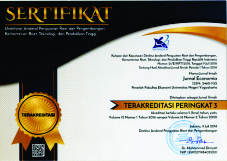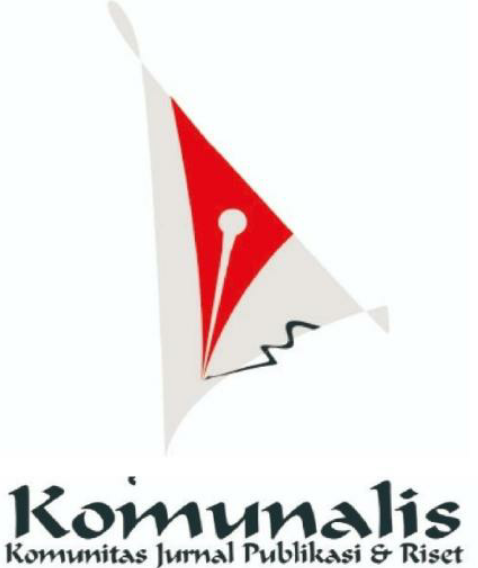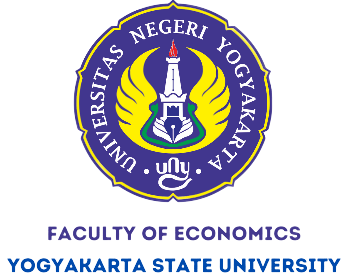Clinical Performance as Predictor of Patient Satisfaction with Moderation of Patient Priorities
Downloads
Abstract: Clinical Performance as Predictor of Patient Satisfaction with Moderation of Patient Priorities. This study objective is to determine satisfaction predictors of clinical performance with triage as moderation. This research utilizes cross sectional observation. The research subject was 479 which are the patients, families, patient confidants in the ED of Orthopedic Hospital Soeharso. The hypotheses are tested using regression analysis and moderated regression analysis (MRA) approach. The results depict the satisfaction level up to 42.8% by all predictors of clinical performance. MRA result concluded that the triage variable of the patient can not be moderating variable. Satisfaction predictor, i.e., nursing, physician, and the waiting time, significantly influences the patient satisfaction. Otherwise, Registration factors and advanced/discharge have no influence on satisfaction. Triage as moderating of patient satisfaction is not supported.
Keywords: clinical performance, patient satisfaction, emergency priority, triage, Emergency Department.
Abstrak: Kinerja Klinis Sebagai Prediktor Kepuasan Pasien dengan Moderasi Prioritas Kegawatan Pasien. Tujuan penelitian ini menguji secara empiris kinerja klinis sebagai prediktor kepuasan pasien dengan moderasi triase. Penelitian ini menggunakan metode observasi cross sectional. Sampel penelitian ini adalah pasien, keluarga, pendamping sejumlah 479. Uji hipotesis dengan model regresi pengaruh langsung dan model pemoderasi dengan Moderated Regression Analysis (MRA). Pengujian hipotesis model pengaruh langsung menunjukkan bahwa tingkat kepuasan yang terjadi dapat dijelaskan 42,8% oleh seluruh prediktor. Hasil analisis MRA menunjukkan semua prediktor, variabel prioritas kegawatan, dan moderat secara bersama-sama berpengaruh terhadap kepuasan. Namun demikian variabel prioritas kegawatan pasien bukan merupakan variabel moderasi. Hipotesis pengaruh langsung prediktor kepuasan yaitu pelayanan perawat, pelayanan dokter, waktu tunggu berpengaruh signifikan terhadap kepuasan pasien didukung. Faktor registrasi dan instruksi pulang/lanjutan tidak berpengaruh terhadap kepuasan. Hipotesis prioritas kegawatan pasien sebagai pemoderasi pengaruh prediktor terhadap kepuasan pasien tidak didukung.
Kata kunci: kinerja klinis, kepuasan pasien, prioritas kegawatan, triase, IGD.
Downloads
Bjorvell, H, & Stieg, J. (1991). Patients Perceptions of The Health Care Received In An Emergency Department. Ann Emerg Med. 20:734-8.
Boudreaux, E.D., Ary, R.D., Mandry, C.V., et al. (2000). Determinants of patient satisfaction in a large municipal ED: the role of demographic variables, visit characteristics, and patient perceptions. Am J Emerg Med. 18:394–400.
Boudreaux ED, d'Autremont S, Wood K. January (2004). Predictor of Emergency Department Patient Satisfaction: Stability over 17 Months. Academic Emergency Medicine journal. 11(1).
Bursch B, Beezy J, Shaw R. (1993). Emergency department satisfaction: what matters most?. Ann Emerg Med. 22:586–91.
Ekwall A, Gerdtz M, Manias E. (2008). The influence of patient acuity on satisfaction with emergency care: perspectives of family, friends and carers. Journal Clinical Nursing. Mar; 17(6): 800-9. doi: 10.1111/j.1365-2702.2007.02052.x.
Fleming M, Croskerry P. (2009). A Safe Culture in The Emergency Department. In: Croskerry P, Cosby K, Schenkel S, Wears R, eds. Patient Safety in Emergency Medicine. Philadelphia: Lippincott Williams & Wilkins.
Gujarati, D.N. (2006). Essentials of Econometrics (3th Edition). McGraw-Hill International Edition.
Hair, J.F., W.C. Black, B.J. Babin, R.E. Anderson, R.L.Tatham. (2006). Multivariate Data Analysis (6th Edition). New Jersey: Prentice Hall.
Hall MF, Press I. (1996). Keys to patient satisfaction in the emergency department: results of a multiple facility study. Hosp Health Serv Admin. 41, 515–32.
Hansagi, H., Carlsson, B., & Brismar, B. (1992). The urgency of care need and patient satisfaction at a hospital emergency department.Health Care Manage Rev. 17(2), 71–5.
Hedges, JR., Trout A., Magnusson, AR., & January (2002). Satisfied Patients Exiting the Emergency Department (SPEED). Study. Academic Emergency Medicine. 9(1).
Heizer Jay, & Render, B. (2014). Chapter 6. Quality Management and International Standards in Operations Management Sustainability and Supply Chain Management. Eleventh Edition. Person Education, Inc.
Hostutler JJ, Taft SH, Snyder C. (1999). Patient needs in the emergency department. Nurses' and patients' perceptions. J Nurs Admin. 29:43–50.
Jones K, Marsden J, Windle J. (2006). Emergency Triage. Manchester Triage Group. BMJ Books. Blackwell Publishing Ltd.
Lewis KE, Woodside RE. (1992). Patient satisfaction with care in the emergency department. J Adv Nurs. 17:959–64.
Liana Lie. (2009). Penggunaan MRA dengan SPSS untuk Menguji Pengaruh Variabel Moderating Terhadap Hubungan Antara Variabel Independen dan Variabel Dependen. Jurnal Teknologi Informasi DINAMIK. Volume XIV.
Luthans, F. (2005). Organizational Behavior. New York: McGraw-hill.
Nurlaila. (2010). Manajemen Sumber Daya Manusia I. Penerbit LepKhair.
Padma, P., Rajendran, C., & Lokachari, P. S. (2010). Service Quality and It's Impact on Customer Satisfaction in Indian Hospitals: Perpectives of Patients and Their Attendants. Benchmarking: An International Journal, 17(6), 807-841.
Pohan, I. (2007). Jaminan Mutu Layanan Kesehatan: Dasar-dasar Pengertian dan Penerapan. Jakarta: Penerbit Buku Kedokteran EGC.
Robbins, S.P. (2006). Perilaku Organisasi, PT Indeks, Kelompok Gramedia, Jakarta.
RS Ortopedi Prof.dr.R.Soeharso Surakarta. (2014). Panduan Triase. IGD RS Ortopedi Prof. dr. R. Soeharso Surakarta.
Rydman, RJ., Roberts, RR., Albrecht, GL., Zalenski, RJ., & Mc-Dermott, M. (1999). Patient satisfaction with an emergency department asthma observation unit. Acad Emerg Med. 6:178–83.
Sarwono J. (2013). Statistik Multivariat Aplikasi Untuk Riset Skripsi (Edisi 1). Andi Yogyakarta.
Singapore General Hospital. 2000. Triage Concepts. In: Triage Officers Course. Singapore: Department Of Emergency Medicine.
Sugiyono. (2007). Metode Penelitian Administrasi. Bandung,Alfabeta.
Sunyoto Danang. (2009). Analisis Regresi dan Uji Hipotesis. Media Pressindo.
Taufiq S. Tacoh, Jane M. Pangemanan, Jimmy F. Rumampuk. (2013). Hubungan Antara Pelayanan Dokter dengan Kepuasan Pasien di Instalasi Rawat Inap A Badan Layanan Umum Rumah Sakit Umum Pusat Prof. DR. R. D. Kandou Kota Manado. fkm.unsrat.ac.id/wp-content/.../TAUFIQ-TACOH-091511177.pdf
Taylor C, Benger JR. (2004). "Patient Satisfaction in Emergency Medicine" Emergency Medicine Journal, doi: 10.1136/emj.2002.003723. 21:528-532.
Tjiptono, F. & Chandra, G. (2011). Service, Quality & Satisfaction. Yogyakarta: Penerbit Andi.
Trout, A., Magnusson, AR, Hedges, JR. (2000). "Patient satisfaction investigations and the emergency department: what does the literature say?" Acad Emerg Med, 7:695–709.
Waggoner, DM, Jackson, EB, & Kern, DE. (1981). "Physician influence on patient compliance: a clinical trial" Ann Emerg Med, 10:348–52.
Yarnold, PR., Michelson, EA., Thompson, DA, & Adams, SL. (1998). "Predicting patient satisfaction: a study of two emergency departments" J Behav Med, 21:545–63.
Zia Tabatabaei, Mohsen R, Riji HM, Abbas E, Mostafa L. (2011). "Patient Satisfaction with Care Received from Emergency Department of Ali-Ebne-Abitaleb Hospital, Iran" Journal of Health Management, 13(1). 1-14.















